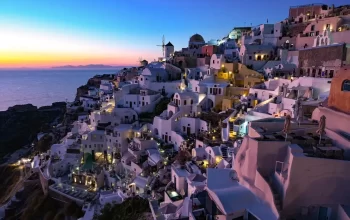Chennakesava Temple is located in the Somanathapura village. Somanathapura is one of the most famous tourist destinations in Karnataka. If you are visiting Mysore, then you should definitely check out this village. This village name was inspired by a chieftain named Somantha who lived during the Hoysala era. There are two very famous temples in this village: Sri Chennakesava Temple and Sri Venugopala Swamy temple. However, the Chennakesava temple is the main attraction of this town.
Sri Venugopala Swamy Temple was built in the year 1296. It was constructed by the Hoysala King Narasimha. Chennakesava is another very famous temple in this village. It is also known as the Keshava Temple and it was constructed in 1268. Chennakesava Temple was constructed by the Hoysala General Samantha. Somanathapura was ruled by King Narasimha Varman III during that era.
The temple is placed on a 3-star-shaped platform. You will first see a pillared hall at the starting of this temple. This hall will eventually lead to the 3 star-shaped sanctuaries. You will find many amazing sculptures in this temple. The walls of this temple are carved with images of dancing girls, gurus, elephants, musicians, lions, monkeys, gods, and goddesses.
There is also an open veranda that surrounds this amazing temple. The temple had statues of Kesava, Janardhana, and Venugopala in starting. However, you will only find the statue of Venugopala and Janardhana as the Kesava statue is missing. The main deity of this temple is Lord Vishnu. However, he is worshipped in the form of Chennakesava in this temple. You won’t find the main idol in this temple as it was stolen.
Amazing Architecture of Chennakesava Temple
This temple is very famous due to its symmetrical structure. You will find many amazing wall carvings in this temple. The architect has followed the Trikuta style which means triple temples. There are three shrines in this temple which join together to form the complete temple. Every shrine has its own tower. If you want to check the whole interconnected design, then you should check the backside of this temple.
This temple is very rich in motifs and carvings. The beautiful sculptures are the main ornaments of Chennakesava Temple. You can find many mythological tales, gods, commoners, gods, and demi-gods in the wall carvings.
The main Chennakesava Temple is built on the jagati which is a symbol of the worldly platform. It is about 3 feet high and is star-shaped. You will find two guardian shrines near the shrine but they are damaged. There is pradakshina path and you need to perform circumambulation in the clockwise direction. You can pictorially read the Ramayana, Mahabharata and Bhagavata Purana in their correct sequence. The Chennakesava Temple is one of the most amazing historical places in Mysore. The beauty of this temple will never disappoint you.
History of Somnathapura Chennakesava Temple
The construction of this temple was caused by Somanatha. A high officer under Hoysala king narasimha iii (1254-1291 A.D.) It is a splendid example of the Hoysala style of architecture, it stands on a raised platform in the centre of a spacious enclosure having sixty four cells. This three celled (trikutachala) structure consists of three garbha grihas, three antaralas and a navarang. It has a mahadwara standing on the east. The images of Venugopala, Kesava and Janardhana are installed in the cells which are surmounted by elegantly carved sikharas.
The basement of the outer wall is highly ornamented with friezes of elephants, scrolls, epic and puranic scenes, small images with intervening turrets and columns with figures in between, number of gods and goddess and their attendants adorn the walls. The lathe turned pillars and delicately carved sixteen different types of ceilings are the characteristic feature of the hoysala art. The names of a number of Sculptors, i.e. Mallithamma, Masanathamma, Chameya, Bhameya etc, are carved on the pedestals of the images.
It is observed that Mallithamma has not only carved the maximum number of images but also carved the northern sikhara that of Janardhana cell.
Inscriptions engraved on a huge slab standing in the mahadwara and on the beams of the navaranga ranging in date from 1269 – 1550 a.d. give the details of the construction of the temple and several grants for the upkeep of the temple.
This temple was badly damaged in the 15th century due to wars. It was finally repaired in the 16th century with the help of the Vijayanagara Empire. You will find different colors of stones in this temple which signifies that the temple was reconstructed. The repaired temple was again damaged in the 19th century and it was reconstructed by the Mysore government in the 20th century. Chennakesava Temple is one of the 1500 Hindu temples that were built during the Hoysala era.
Places around Somanathapura Chennakesava Temple
- Mysore Palace
If you are visiting Chennakesava Temple, then you must also visit the Mysore city. Mysore Palace or Amba Vilas Palace is one of the most popular destinations in Mysore. You can find Indi-Saracenic, Roman, Oriental, and Dravidian styles of architecture in this palace. This three-story palace is made by using the grey granite. There is also a five-story tower in this palace that is 44.2 m high and is crafted from gold.
You can enter the Mysore palace via Doll’s Pavilion or Gombe Thotthi where you will find a very ancient group of dolls. There is also a wooden elephant present at the entrance of this palace. You will see seven canons in front of Gombe Thoothi. These canons are used to mark the completion of the Dussehra festival where a 200 kg gold throne is kept out for display. You can also check the rooms that are made for royal costumes, jewelry, and portraits. This Palace was constructed from the 14th-20th century and consists of 12 temples.
- Chamundi Hills
If you are visiting Mysore, then you should definitely visit the Chamundi Hills. This hill is 1065 meters above sea level. You will find the Chamundeshwari Temple at the top of this hill. This temple is dedicated to the Goddess Parvathi and Chamundeshwari. The temple was originally constructed in the 11th century but it was repaired again in 1827 by the Mysore kings. You will find an idol of Mahishasura (demon king) in front of this temple.
There is also a statue of Nandi which is 5 m tall and it is made from black granite. There is also another small temple dedicated to Lord Hanuman and Chamundeshwari. The temple stays open from 7.30 am to 2 pm and from 3.30 pm – 6 pm. You can enjoy the beautiful view of Mysore city from these hills.
- Talakadu – The amazing city of Lost temples
If you are visiting Chennakesava Temple, then you should also check the Talakadu city. It is only 30 km away from the Chennakesava Temple. Talakadu was a very famous city in the past and there were more than 30 temples in this city. However, all these temples were buried under the sand in the 16h century. According to ancient writings, the temples were buried due to various natural disasters. However, many local stories state that the city was buried due to the curse of Alamelu was the queen of this city.
In the past, Talakadu has 5 very famous Shiva temples and it was ruled by the Ganges and the Cholas. Hoysala King Vishnuvardhana chased out the Cholas during his reign. This city was finally taken over by the kings of Mysore. The king of Mysore attacked Talakdu with his army. He wanted to get the jewel of the Alamelu. However, she threw the beautiful jewel in the river Cauvery and also killed herself. She cursed the Talakadu city and Mysore Kings before dying. The city of Talakadu was buried under the sand in the 16th century.
Popular festivals celebrated at Chennakesava Temple
- Hoysala Mahotsava
This dance festival is held at Chennakesava temple and other Hoysala temples. It is a perfect place for hosting this cultural feast. The Hoysala dynasty ruled some parts of South India from the 11th century to the 14th century. People of Karnataka celebrate many cultural music and dance festivals. Dance and art lovers from all over India attend this festival.
You will find many veteran musicians and dancers performing in this temple and it is also the perfect chance for newcomers. Thousands of tourists will visit the Chennakesava temple during this festival. You can enjoy this festival with your friends and family. The lost glory of this amazing city is revived during this festival. Every performer will practice their art for days to deliver world-class performance. This festival mostly happens in the month of March and April.
Best Time to Visit Chennakesava Temple
Somanathapura experiences very hot weather during the summer season. The temperature can go up to 40 °C during the summers. Thus, you should avoid this temple during the summers. The best time to visit this temple is during the winter. You will find very pleasant and cool weather. Thus, you can visit this temple between January-March and October-December. If you want to enjoy the Hoysala Mahotsava, then you should visit this temple in March.
How to reach Somanathapura?
Somanathapura is a small village in Karnataka. Thus, you won’t find any direct trains or buses to this village. You should start your trip from Mysore. Mysore is only 35 km away from the Somanathapura village. You can also find direct buses from Bangalore. However, the distance between Bangalore and Somanathapura is 137 km. This temple is mostly visited by the visitors that are visiting Mysore. Mysore Airport is well connected to other Indian cities.
Also, Mysore Railway station is connected to all the major Indian cities. There is no direct transport available between Mysore and Somanathapura. You will find a bus to Bannur from platform number 9. The bus will mostly drop you at the Bannur bus stand. You can directly find tempos to Somanathapura from Bannur bus stand. The procedure of going back to Mysore is the same. You need to find a tempo from the Somanathapura to Bannur bus stand. After that, you can find a direct bus to Mysore.
Conclusion
Chennakesava Temple is one of the most unique temples in India. If you are visiting Mysore, then you should definitely check out this temple. You will also find many other attractions in Mysore like Mysore Zoo, Chamundi Hills, and Mysore Palace. The Shivanasamudra Falls is only 56 km away from this temple. It is one of the most beautiful waterfalls in India. You should also check the city of lost temples i.e Talakadu. It is only 25 km away from this temple. You can cover all these tourist spots in only 2 days. Thus, it is one of the best weekend getaways in Karnataka.







